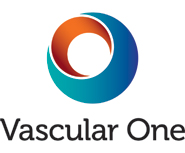Why am I having this ultrasound examination?
The diagnostic venous reflux is a non-invasive method of checking the blood flow through the veins in your legs and assessing for any other venous abnormalities. Your doctor has requested this test for you because you may have one or more of the following presentations:
- varicose veins in one or both legs
- extensive ‘spider veins’ and dilated venules (small blue veins just below the skin surface)
- skin changes, such as brown pigmentation, in the lower part of your legs
- an itchy rash (venous eczema) associated with varicose veins
- a leg ulcer
- bleeding from a vein near the skin surface
- painful clotting in the varicose veins (superficial thrombophlebitis)
- previous deep vein thrombosis
- previous treatment for varicose veins (sclerotherapy, thermal ablation or surgery)
What veins will be checked in this examination?
- Femoral Vein
- Great Saphenous Vein
- Perforating Vein
- Popliteal Vein
- Posterior Tibial Veins
- Peroneal Veins
- Perforating Vein
- Small Saphenous Vein
What happens during the examination?
No dietary preparation is required. The diagnostic venous reflux ultrasound is performed with you in an upright position, either standing on a sturdy examination platform, which has a hand-rail for you to hold on to, or sitting on the edge of an examination couch. In order for the sonographer to easily access the lower limb veins, you will be asked to remove your footwear, and the outer clothing from your waist down. It is helpful if you do not wear tight underclothing, such as ‘step-ins’, or long legged underpants, such as boxer shorts. The sonographer will assess the valves in your veins using pressure on your calf muscle which pushes blood up your leg and allows any reflux or‘back flow’ to be demonstrated. Throughout the scan you will feel the gentle pressure from the transducer as it runs along the course of the blood vessels, and you will hear the sound of the Doppler from time to time, but there should be no major discomfort. If you have any questions or concerns before or during the scan, please feel free to ask the sonographer.
How long does the examination take?
The diagnostic venous reflux examination will take between 30 and 60 minutes, depending on the extent and severity of your varicose veins.
When will I get my results?
The sonographer does not usually give you your results at the time of your examination, however your doctor will receive your scan results within a week. If you have an appointment already booked with your referring doctor, please advise the sonographer at the time of your scan. Urgent results are always sent back to your doctor within 24 hours.
If you have an appointment to see the doctor at Hunter Vein Clinic, either on the same day or at a later date, your results will be explained to you during your consultation.
